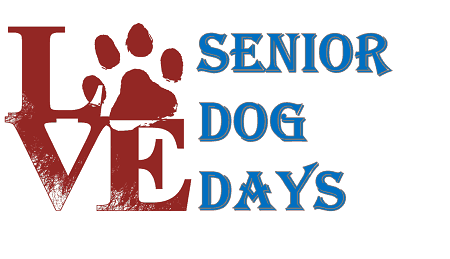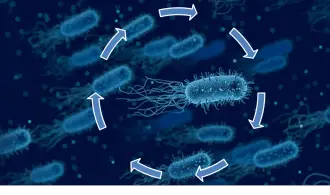Some content may contain affiliate links to products which means we could earn a fee on your purchase. Thank you for visiting
Parvo is a highly infectious virus that can cause serious complications and even result in the death of your dog or puppy. But for owners who get their dog’s proper care and immediate medical attention, parvo’s survival rate is not only good….it’s very good.
This article will cover the stages of parvo from first contact all the way through recovery.
What are the Stages of Parvo?
Here is a quick summary of the stages of parvo and then we’ll go through each stage in more detail:
- Stage 1: Exposure to Parvo
- Stage 2: Incubation Period 3-5 Days from 1st Contact
- Stage 3: Symptoms of Parvo Appear 5-8 Days from 1st Contact
- Stage 4: Diagnosis of Parvo – Upon Medical Evaluation (This is Critical at First Sign of Symptoms)
- Stage 5: Treatment of Parvo – Prescribed Home Care or Hospitalization
- Stage 6: Recovery Time for Parvo – Approximately 14-20 days
- Stage 7: Full Recovery & Re-Test Negative – Approximately 30-40 days after 1st contact
Whether or not your dog stands a chance at recovering from parvo has everything to do with whether or not she has the antibodies to fight the virus to begin with. Most dogs who are protected with immunity can come in contact with parvo and suffer no effects.
However, if your dog does not have the immunity and exposure was high enough, your dog will very likely need medical attention in order to survive exposure to parvo’s viral particles. And the good news: 90% of dogs that receive early treatment for parvo will recover.
In this article we will go over the 7 stages of parvo including what is happening during the stage and the timeline. It’s important to note that parvo day by day will be different for each dog.
These are average timelines and can vary based on exposure level and a dog’s overall well-being.
Parvo Stage 1: Exposure
A dog cannot contract parvo without being exposed to the virus, so it makes sense that the first stage of parvo is exposure to the virus – and that’s exposure without proper immunity. Many dogs come into contact with the canine parvovirus but a vaccinated dog with proper immunity will not become ill.
How are dogs exposed to parvo?
Parvo is a resilient virus. So resilient that even prolonged, freezing temperatures do not kill the parvovirus. In fact, parvo will simply go dormant in winter months and regain its effectiveness as temperatures warm up. Dog’s can be exposed to the virus by sniffing or licking something on the ground.
That is why springtime is high season for parvo outbreaks because as snow melts, the parvovirus which may have gone dormant under all the snow slowly reveals itself and becomes accessible to our unsuspecting dogs. For a thorough read on parvo lifespan you can check out: how long Parvo lives in Soil, Grass and Snow (article).
Dogs can also contract the virus by sniffing another dog’s anus or coming into contact with infected saliva or vomit from an infected dog.
Finally, dogs can have the virus brought to their home. For instance, the owner steps in dog feces that’s infected with the virus. Later that day, the owner takes off his shoes in the mudroom and his unprotected dog sniffs and licks the bottoms.
What Happens When a Dog is exposed to Parvo?
Once your dog is exposed to Parvo, his level of immunity will dictate whether or not he is unharmed by the exposure or will proceed to Stage 2.
Dogs with effective immunity against parvo – If your dog has built adequate immunity to the parvovirus, she will likely have no symptoms, and not progress through the stages of parvo. Immunity is built through proper vaccination and maintaining booster vaccines as recommended.
Your dog could also have built immunity to parvovirus if he contracted parvo in the past and fully recovered. It is important to note that if your dog has recovered from parvo, you should still talk to your veterinarian about booster protection since parvovirus can mutate to form new strains.
Dogs without immunity against parvovirus –Immunity against parvovirus is not likely if your dog is not receiving proper vaccinations and boosters or if your dog doesn’t respond well to the vaccinations given. For more information on older, vaccinated dogs getting Parvo, Click Here for that Article.
If your dog has no immunity to parvovirus, after exposure they will progress to the next stage of parvo.
Parvo Stage 2: Incubation
Incubation period is the time between your dog’s first contact of the parvovirus particles and when symptom are first apparent. Most dogs that contract parvovirus will have an incubation period of 3-5 days.
If you learn in advance of symptoms that your dog has come into contact with parvo, you should call your veterinarian preemptively. For example: you learn of a parvo outbreak at your puppy’s training center and your puppy was there a day ago. While it may be too early to test for parvo, vitals can be monitored and emergency procedures can be put in place.
Parvovirus Stage 3: Symptoms Appear
Symptoms of parvovirus usually begin to appear around day’s 5 -8 after first contact with the virus and they can be the most frightening stages of parvo. The first symptoms of your dog having parvo include:
- Vomiting
- Watery Diarrhea
- Bloody Diarrhea
- Lethargy/Malaise
- Hypothermia
- No Appetite
- Fever
Never ignore these symptoms as they are very often associated with canine parvo and other awful illnesses.
Parvo Stage 4: Diagnosis from Veterinarian
Time is of the essence when it comes to medical evaluation of parvovirus symptoms. In most cases, your dog will not be able to recover on her own if infected with the canine parvovirus. If left untreated, canine parvo has a mortality rate of 90%. That is why it is critical to seek medical attention at the first signs of parvovirus.
On the flip side of that statistic is the good news, which is this: 90% of dogs who DO get medical treatment at the first sign of symptoms will survive and recover.
Once your dog is diagnosed with parvovirus, (or even before results) treatment will begin.
Parvovirus Stage 5: Treatment
Treatment – while there is no cure for parvovirus, most dogs (about 90%) who receive early treatment from trained professionals do fully recover. Veterinarians usually give infected dogs treatments that may include:
Most Common
- Fluid therapy
- Anti-vomiting medicine
- Antibiotics
- Antacids
- Vitamins (injected)
Possible (Severe)
- Blood transfusions
Only your veterinarian can guide you toward the next steps which would either be hospitalization or home care. Dog owners who are comfortable with needles, medications and homecare might be able to take their dog home and provide subcutaneous fluid therapy (under the skin) as prescribed.
Homecare is not likely to be offered if your dog is seriously suffering and not stable.
Parvo Stage 6: Recovery Period
While recovering from parvo, your dog should not be around other dogs for two reasons. One: your dog is shedding the virus through her feces and you don’t want to infect other dogs. Two: your dog has a weakened immune system and secondary infections are very common with dogs that are recovering from parvo.
Keep your dog isolated to one room and begin cleaning your own home and clothing. It’s important to know that Lysol and other disinfectants like spic & span do not kill Parvo. Equip your home with Parvo killing cleaners so that you can spray contaminated items immediately.
Certain Bleaches (like Clorox) kills parvo at a 30:1 ratio (water:bleach). Read your bleach label because not all bleaches kill canine parvo. Your label will say “Kills Canine Parvovirus” (usually in small print on the back).
Where bleach cannot be used, these bleach alternatives are commonly used in the pet industry, vet offices and kennels and they kill the canine parvovirus:
Images are Clickable and Link to Product Pricing & Availability Sniper |  Trifectant |  Rescue |  Virkon-S |
|
|---|---|---|---|---|
| Check Price | Click for Price | Click for Price | Click for Price | Click for Price |
| AWARD | Best Overall | Best Traveler | Kills FAST | Big Jobs |
| Approximate Cost Per Ounce | $$ .37/oz | $ .05/oz | $$$ .65/oz | $ .01/oz |
| Size | 1 Gallon (128 oz) | 50 Tablets Makes 800 oz | 32 Oz | 10 Lb (20,000+oz) |
| Form | Liquid | Tablets | Liquid | Powder |
| Mixing | Ready To Use | 2 Tabs per 32 Oz. Water | Ready or Concentrated | 1 part Powder 100 parts Water |
| Uses | Yard Clothing Carpets Furniture Dog Fur & Paws Hard Surfaces Air | Hard Surfaces | Hard Surfaces | Hard Surfaces Yards Air |
| Contact Time Needed | 10 Minutes | 10 Minutes | 1 or 5 Minute | 10 Minutes |
| Best Features | Eco-Friendly Food Friendly Fur/Paw Friendly | Travels Easy | Kills Parvo FAST | Bulk-Bucket |
| Biggest Drawback | Sometimes on Backorder | Corrosive Irritant Until Mixed | Hard Surfaces Only | Corrosive Irritant Until Mixed |
| Also Kills | Staph MRSA HIV 1 Hepatitis B Legionnaires | Kennel Cough E.Coli Herpes Salmonella Pink Eye Ring Worm | Distemper FIPV Bordella E.Coli Listeria | E.Coli Salmonella Canine Hepatitis Equine Hepes 1, 3 Foot and Mouth |
For the complete guide of “Cleaners that Kill Parvo in Your Home” Click HERE to be taken to the Article where you’ll learn about using bleach and the above referenced bleach alternatives.
Recovery Diet
While your dog is recovering, a very bland, home cooked diet is also usually prescribed for at least a week and then his normal food is slowly introduced.
In order to complete all of the stages of parvo, your dog has to be 100% fully recovered.
Parvo Stage 7: Full Recovery
The best way to know if your dog is fully recovered and no longer shedding the virus is through a re-test. Your vet will likely want a stool sample after 15-30 days depending on the severity of your dog’s parvo case.
Once you get the all clear from your veterinarian, your dog’s life (and yours) can go back to normal. After defeating parvo, your dog should have a special immunity against future exposure. But remember, just like our flu virus, canine parvovirus can mutate and produce different strains so follow your veterinarian’s advice about future titer testing (testing parvo antibody levels) or giving your dog future boosters.
Final Thoughts
Those are the 7 stages of parvo and I hope you get through all of them and reach full recovery.
Parvo takes its toll on your dog and requires diligent care and effort to help your dog recover and to rid the virus from your home. But thousands of dogs and dog owners have stories to share about surviving parvo.
Remember to get treatment at the very first sign of parvo, keep your dog isolated and protected from germs during recovery, clean diligently with products that kill the virus and you’re likely to experience a full recovery too.

